Waves
In this article, we will be learning about waves as per the requirements of the Secondary 3 Physics level. We will be focussing on the definition of waves. We will also be learning about the various terms related to the wave-like crest, trough, amplitude, in phase, wavelength, etc.
General Wave Properties
- Definition of a wave
- Common terms of a wave
- Displacement
- Equilibrium position
- Vibration
- Oscillation
- Frequency
- Period
- Amplitude
- In phase
- wavelength
Wave Motion
Very often, in the midst of a football match, the spectators in the stadium make a “human wave” that moves around the stadium.
How would you describe the motion of a “human wave” in the stadium?
The wave travels around the stadium.
How would you describe the motion of the people in the human wave?
The people merely move up and down when the wave “hits” them.
Do the people move together with the wave?
No
Let’s translate it into technical terms.
How would you describe the motion of a “human wave”?
The wave travels around the stadium.
A wave is a transfer of energy in the direction of the wave.
How would you describe the motion of the people in the human wave?
The people merely move up and down when the wave “hits” them.
The particles in a wave vibrate about their fixed positions.
Do the people move together with the wave?
No
The particles in a wave do not move along with the wave.
Definition of a Wave
A wave is a transfer of energy in the direction of the wave via the vibration of particles without a transfer of the medium itself.
Wave terms
- When people move away from their seats, it is called displacement from their equilibrium positions.
- When people move up and down, it is called vibration or oscillation.
- The number of complete oscillations per second of time is called the frequency of the wave.
- The time taken per complete oscillation of the wave is called the frequency of the wave.
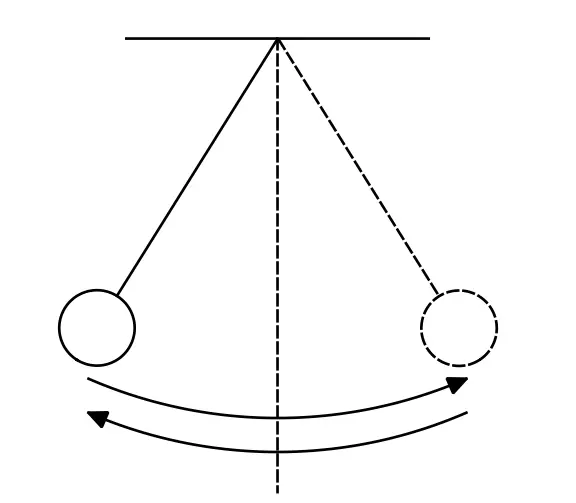 |
\(\begin{align} \textbf{frequency} = \frac{1}{\textbf{ period }} \end{align}\) |
Practice Questions
Question 1:
Which of the following statements is NOT correct?
- The unit of frequency is Hertz (Hz).
- The unit of frequency is per second (s\(^{-1}\))
- The unit of period is per second (s\(^{-1}\))
- The unit of period is second (s)
Solution:
Option C is the correct choice.
Explanation:
Option A is correct. The SI unit of frequency is Hertz (Hz).
Option B is also correct. The SI unit of frequency is also per second (s\(^{-1}\)).
Option C is not correct. The SI unit for period is second (s). It is a time interval.
Option D is also correct.
Question 2:
Here is a diagram of the wave formed along a rope.
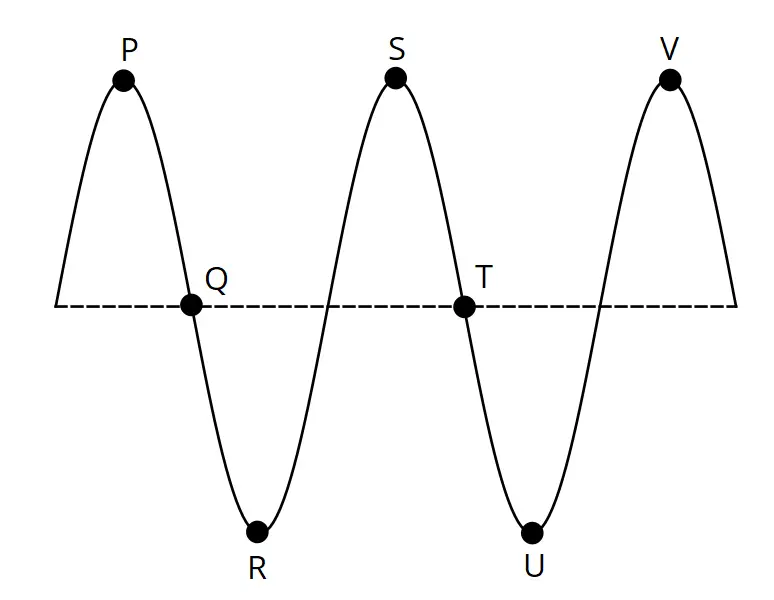
- Which points on the wave are crests?
- Which points on the wave are troughs?
Solution:
- The crest of a wave is the peak of the wave. In other words, crest is the maximum positive displacement of the particle from equilibrium.
In the above wave diagram of the rope, the wave is forming three peaks - P, S, V.
Thus, the crest of the wave is P, S, V.
- The trough of the wave is the valley of the wave. In other words, trough is the maximum negative displacement of the particle from equilibrium.
In the above wave diagram of the rope, the wave if forming two valleys - R, U.
Thus, the troughs of the wave are at R and U.
Amplitude
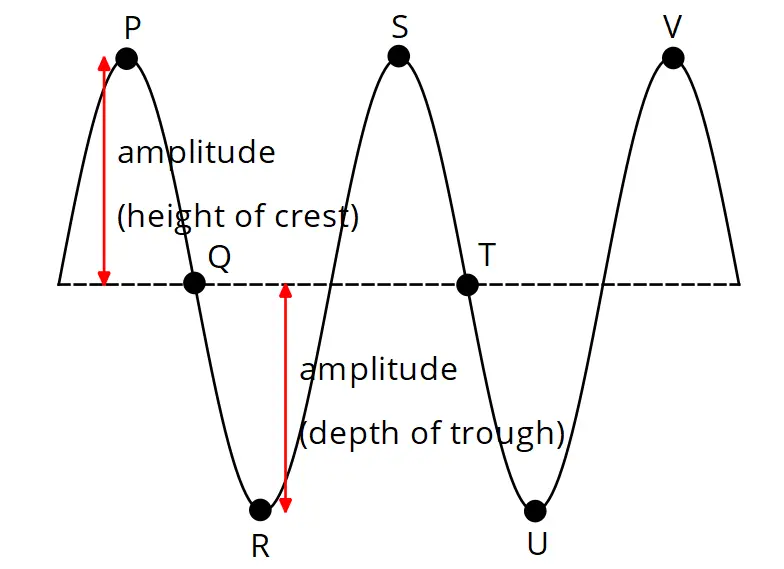
The amplitude A of a wave is the maximum displacement of a particle from its equilibrium or rest position.
In Phase
Points along the wave are in phase if they have the same
- Direction
- Speed
- Displacement from their equilibrium positions.

To determine which particles on the wave are in phase, let us consider all the three points (marked 1, 2, and 3) mentioned above.
All three particles have equal displacement (height) from the equilibrium.
However, this does not justify that they are in phase.
If we consider the direction of the movement of the wave from left to right as marked in the diagram, then the dotted wave shows the position of the wave after some time.
In that case, the particle at the first cross moves up because the wave has moved by that time as shown by the dotted wave.
The particle at the second cross moves down as shown in the diagram as the crest is now becoming the trough. So, even though particle 2 has the same displacement from equilibrium as particle 1, the direction of movement of the particle is not the same as that of particle 1.
Hence, we can say that particle 1 and particle 2 are out of phase.
The particle at the third cross also moves up as shown in the diagram. We also observe that the displacement of particles 1 and 3 are the same. We can say that they move at the same speed. They are moving in the same direction too.
Hence, we can say that particles 1 and 3 are in phase.
Question 3:
Here is a diagram of a wave formed along a rope.

Which 2 points on the wave are in phase?
- P and Q
- P and R
- Q and O
- Q and T
Solution:
Option D is the correct answer.
Explanation:
Option A - P and Q are not in phase as the displacement from the equilibrium is different.
Option B - P and R are also not in phase. P has the maximum positive displacement and R has the maximum negative displacement.
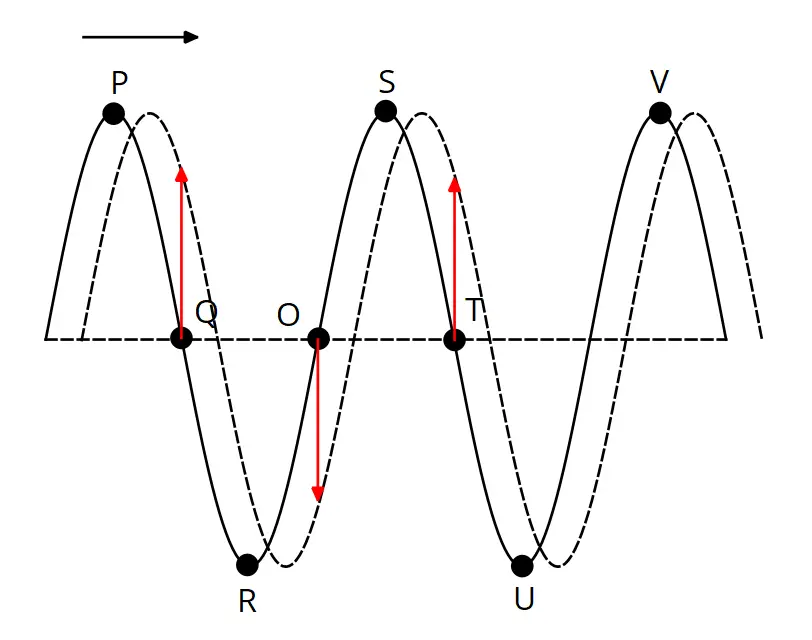
Option C - Q and O have the same displacement - zero. But when we transpose the wave to the right, we see that particle Q is moving up and particle O is moving down.
Thus, the direction of movement of particle Q and particle O is different. Thus, they are not in phase.
Option D - Q and T have the same displacement - zero. But when we transpose the wave to the right, we see that particle Q is moving in the upward direction and particle T is also moving in the upward direction. The displacement of the particles in the transposed wave is also the same. Thus, they are moving at the same speed.
Hence, we can say that particles Q and T are in phase.
Wavelength
The wavelength of a wave is the shortest distance between any two points in phase.
The symbol of the wavelength is lambda (\(\lambda\)).
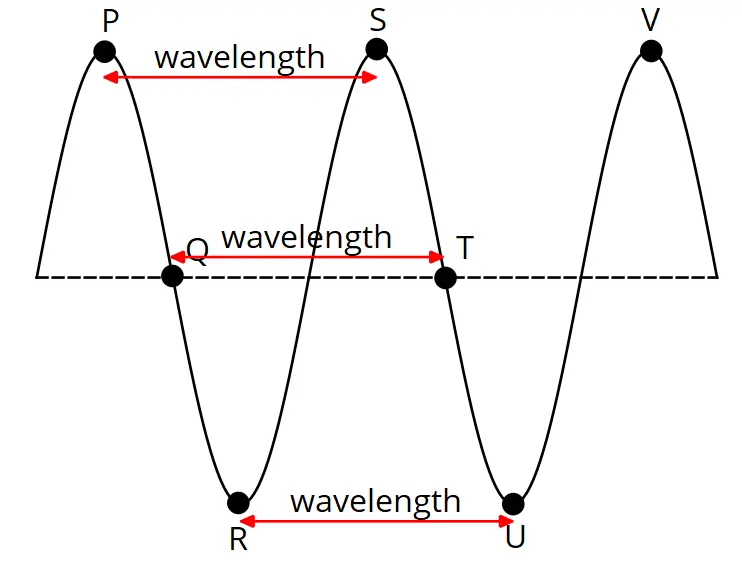
The points P, S and V are all in phase.
But wavelength is the shortest distance between any two points. Hence, we will take P and S and NOT P and V.
Question 4:
Here is a diagram of a wave formed along a rope.
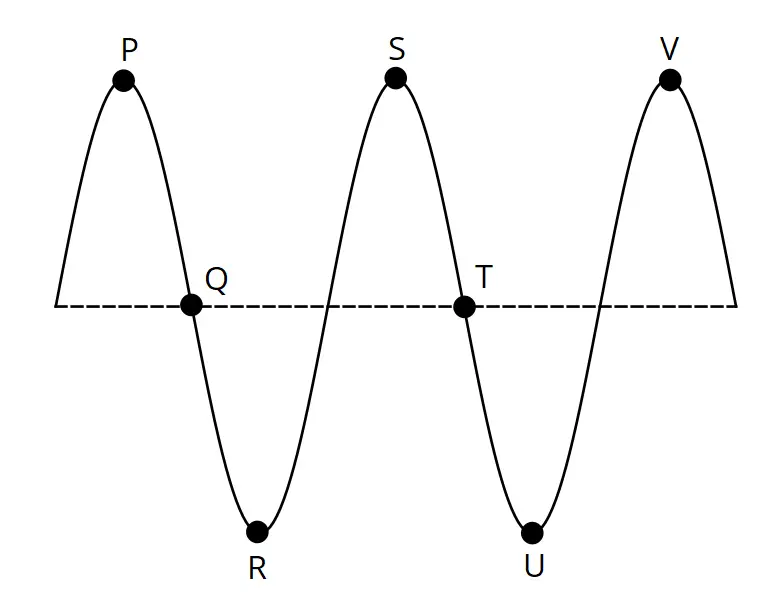
How many wavelengths is the distance PV?
- 1
- 1.5
- 2
- 3
Solution:
Option C is the correct answer.
Explanation:
The distance between P and S is one wavelength. The distance between S and V is one wavelength.
Thus, the distance between P and V is two wavelengths.
Question 5:
How many wavelengths are the distance QO?

- 0.5
- 1.0
- 1.5
- 2.0
Solution:
Option A is the correct answer.
Explanation:

Point Q and T are one wavelength.
Since O is the centre, QO is half the wavelength.
Conclusion
In this article, we have learnt about waves and the definition of a wave. We have also learnt many terms related to the waves like amplitude, wavelength, in phase, etc.
This is one of the very important topics for the O-level exams. We have covered this article as per the needs of Secondary 3 Physics.


 SG
SG  VN
VN 


















